How to Fix Remote Desktop Error Code 0x204 on Windows and MacOS?
The Remote Desktop Error Code 0x204 on Windows or macOS means the system can’t connect to the remote device, often without specifying the problem. This error usually indicates that the client couldn’t reach the remote PC, typically due to misconfigurations or network issues. The most common cause is a firewall blocking the Remote Desktop Protocol (RDP) port (TCP 3389) or network connectivity problems.
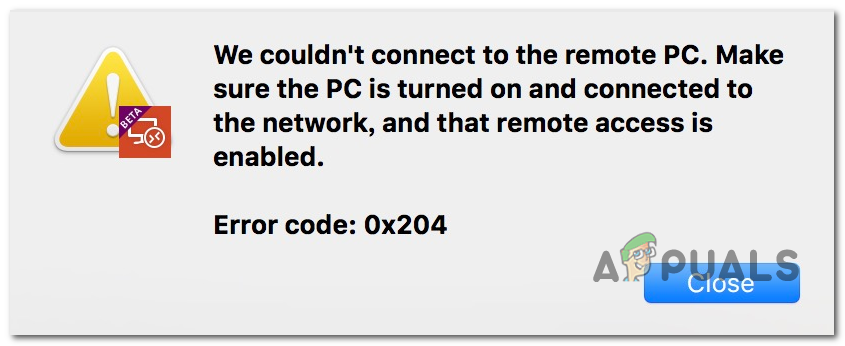
Additionally, the error might occur due to a version mismatch between the Remote Desktop client and server or if the server is restarting.
Now that you know the causes lets discuss the solutions.
1. Enable the Remote Desktop Protocol (on the Windows Machine)
If the Remote Desktop Protocol (RDP) is not enabled on the host machine, it will block remote connection attempts. Enabling RDP allows the machine to accept remote connections, resolving a common cause of the error. This step opens communication between your device and the remote system, letting the session proceed without security blocks or misconfigurations.
- Press Windows key + R to open a Run dialog box. Type ‘SystemPropertiesRemote.exe’ and press Enter to open the System Properties screen.
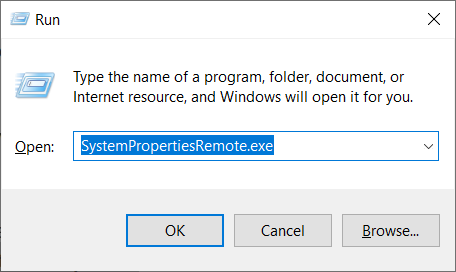
System Properties remote Note: If prompted by UAC (User Account Control), click Yes to grant administrative privileges.
- In the System Properties screen, check the Remote tab and change the toggle to Allow remote connections to this computer.
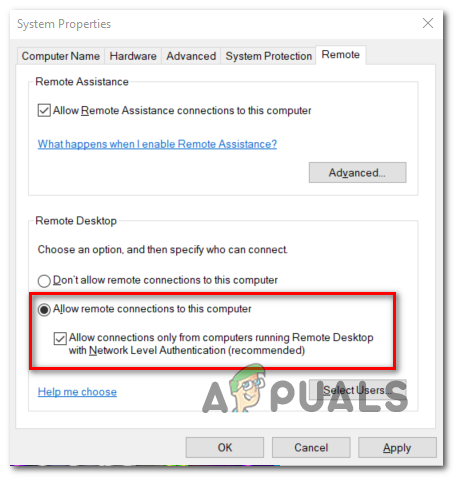
Allowing communications using the Remote Desktop protocol Note: If connecting from a different network, uncheck the box associated with ‘Allow connections only from computers running Remote Desktop with Network Level Authentication‘.
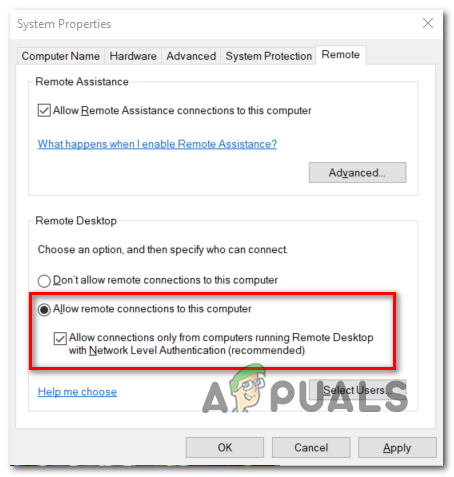
Allow communications using the Remote Desktop protocol - Click Apply to save changes and attempt to connect using the Remote Desktop protocol again to see if the issue is resolved.
If the issue persists, move on to the next potential fix below.
2. Allow Remote Desktop through Windows Firewall
Allowing Remote Desktop through Windows Firewall ensures that the necessary port is open for RDP connections. Without enabling this access, the firewall could block the traffic needed for Remote Desktop, preventing the connection from being established. This step is crucial to bypass firewall settings that might hinder authorized access.
- Press Windows key + R to open a Run dialog box. Type ‘firewall.cpl’ and press Enter to open the Windows Firewall settings menu.

Run dialog: firewall.cpl Note: If prompted by UAC (User Account Control), click Yes to grant administrative privileges.
- In the Windows Defender Firewall settings, click Allow an app or feature through Windows Defender Firewall from the left-hand menu.
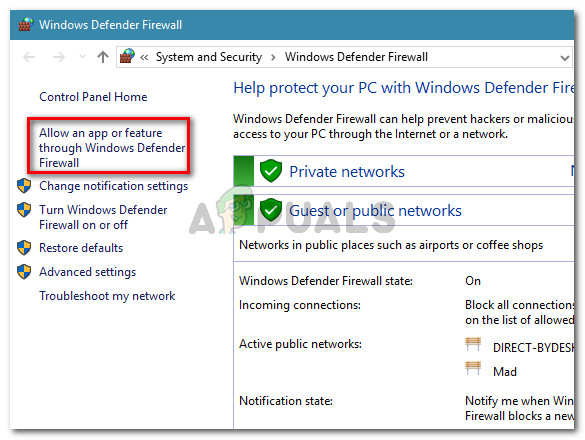
Click on Allow an app or feature through Windows Defender Firewall - In the Allowed apps window, click Change settings (top-right) to modify the list of allowed apps.
- Scroll down and enable the Private & Public box for Remote Desktop.
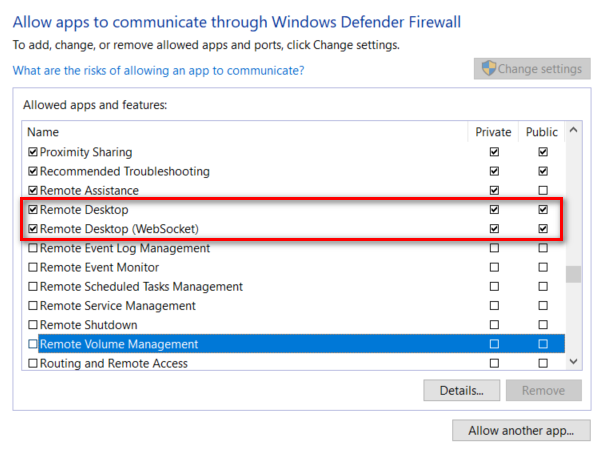
Allowing the Remote Desktop Protocol in Windows Firewall - Do the same for Remote Desktop (WebSocket) and click OK to save the changes.
- Restart your Windows machine and try connecting using the Remote Desktop protocol after the next startup sequence.
3. Disable Third-Party Antivirus (if applicable)
Some users experience this issue with third-party security suites like McAfee Internet Security, which might mistakenly block the Remote Desktop port as a security threat. If this is the case, try disabling the real-time protection of your antivirus suite. The steps for doing this can vary depending on the antivirus program you are using.
- Right-click the antivirus icon in the taskbar and look for an option to disable real-time protection.
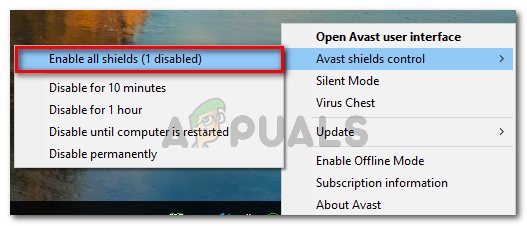
You can check our detailed guide for different antiviruses here.
4. Uninstall Third-Party Firewall (if applicable)
Deleting a third-party firewall might not fully resolve the issue, as the security suite could still be active. If the firewall is causing the problem, setting up a whitelisting rule to exclude Remote Desktop from its analysis is necessary.
- Press Windows key + R to open a Run dialog box. Type ‘appwiz.cpl’ and press Enter to open the Programs and Features menu.

Type appwiz.cpl and Press Enter To Open Installed Programs Page - In the Programs and Features menu, scroll through the list, find your third-party firewall entry, right-click, and select Uninstall.
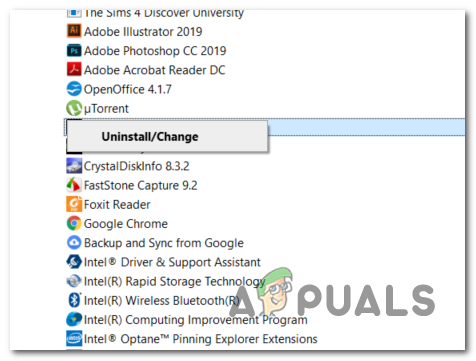
Uninstalling Avast Firewall - Follow the prompts to complete the uninstallation, then restart your computer.
- After restarting, completely uninstall the program to ensure no leftover files remain that might cause the issue.
- Once you’ve removed your third-party firewall, try reconnecting using the Remote Desktop protocol to see if Error Code 0x204 is resolved.
5. Use the Remote Assistance Invitation
By creating a Remote Assistance invitation, you bypass potential blocks interfering with the Remote Desktop connection. This method uses a different protocol, avoiding network issues, firewall settings, or blocked ports often linked to Error Code 0x204. It allows the client and host to communicate through an alternate route, ensuring a secure and direct connection without relying on problematic network configurations.
- Press Windows key + R to open a Run dialog box. Type ‘msra.exe’ and press Enter to open the Windows Remote Assistance wizard.
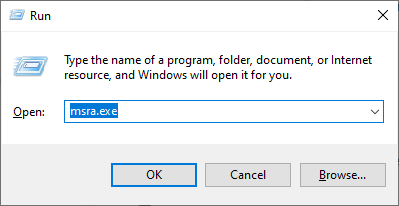
Accessing the Windows Remote Assistance utility Note: If prompted by UAC (User Account Control), click Yes to grant administrative privileges.
- In the Windows Remote Assistant wizard, click Invite someone you trust to help you.
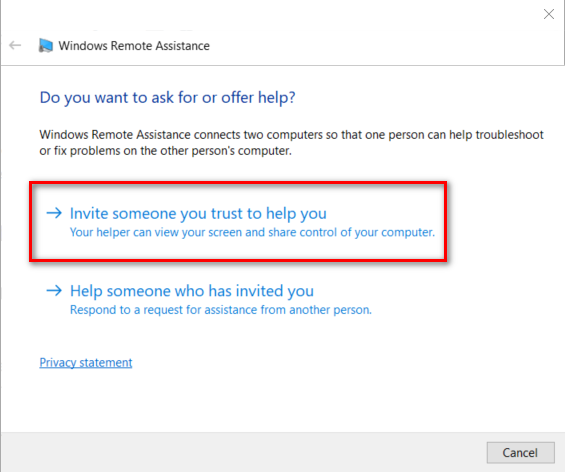
Invite someone you trust to help you - On the next screen, click Save this invitation as a file.
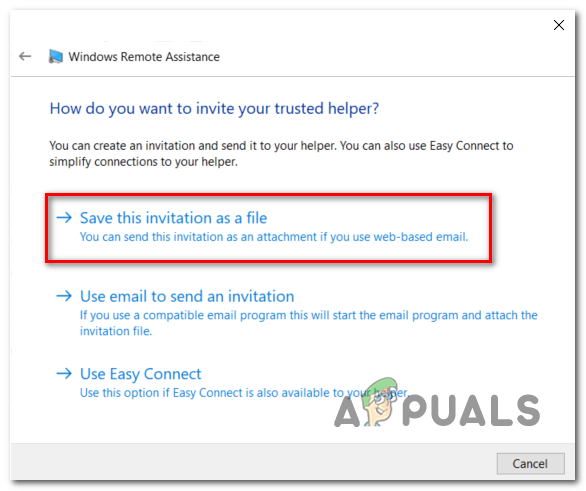
Save this invitation as a file Note: You can select a different option if easier, such as attaching the invitation with an email program or using Easy Connect.
- Open the invitation on the machine you’re having trouble connecting with and see if the problem is resolved. Once opened, necessary ports should open, and Error Code 0x204 should no longer occur.
If the problem persists, proceed to the next potential fix.
6. Remove the Temp Folder for Remote Desktop (MAC Only)
If you’re facing it only on macOS, the temp folder used by the Mac Remote Desktop app may have corrupted files blocking the connection. These files can hinder how the app connects to remote servers, causing errors like 0x204. Deleting the temp folder allows the app to create new configuration data the next time it runs, removing the chance of stale or faulty data causing connection problems.
- Close the Remote Desktop program on your Mac.
- Click the Finder icon (bottom-left corner).
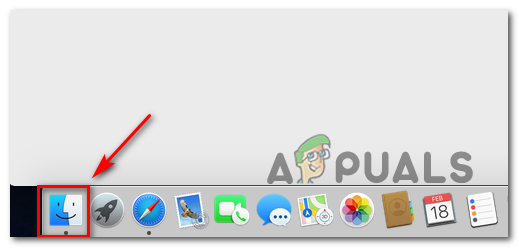
Opening the Finder App - Search for ‘group containers‘ in Finder, then press Return.
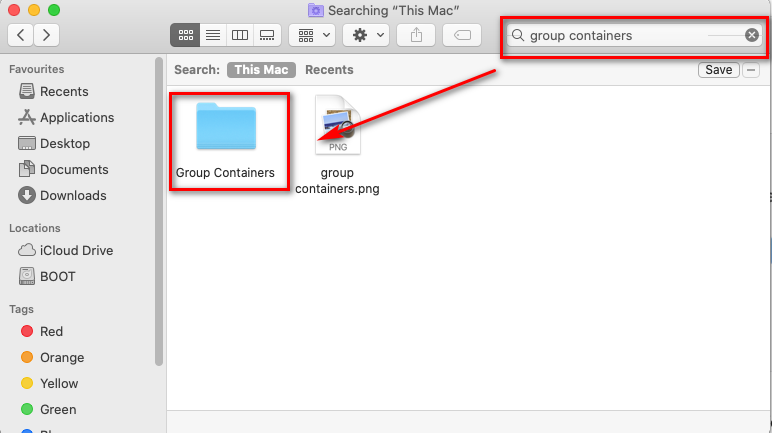
Finding the Group Containers folder - Delete the UBF8T346G9.com.microsoft.rdc entry by right-clicking and selecting Move to bin.
- Restart your Mac and see if the issue is resolved upon startup.




